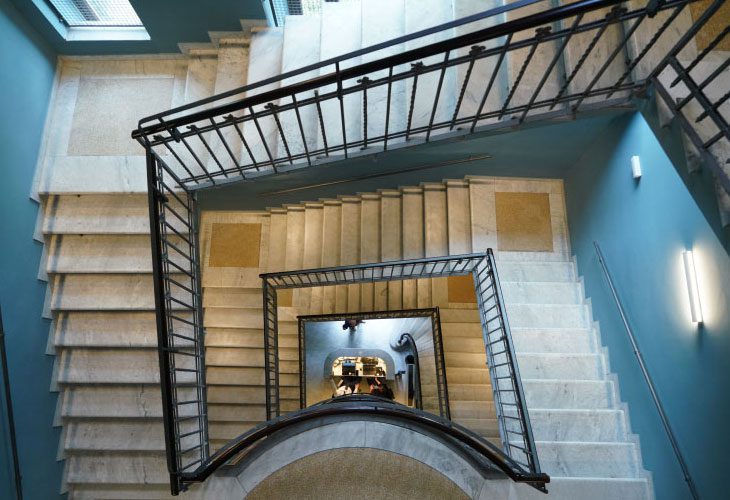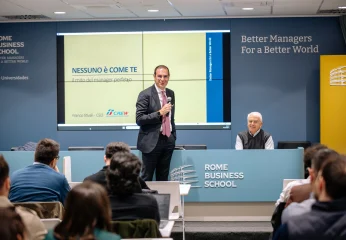How to use the resources of the Next Generation EU in a sustainable way?

8% For gender equality, social and territorial cohesion.
An extract from the Rome Business School – Research Center Report, Environmental Sustainability and Ecological Development.
The European agreement of July 2020 and the launch of the EU Next Generation program, and in particular of the Recovery and Resilience Facility, represent an extraordinary opportunity to relaunch the Italian economy, through objectives and resources that were lacking after the 2008 crisis, and design a fair and sustainable development trajectory. It is a question of restoring hope to a country that in the last thirty years has become impoverished and has seen the network of social and health, school and university infrastructures gradually weaken. We are therefore at an extraordinary and epochal passage, not to be wasted, in which at the center there is the choice to invest in the European Green Deal, abandoning the recipes of the past with the aim of “build back better”: rebuilding better and in different way, with innovation, sustainability, attention to social unrest and inequalities that have grown in recent years.
Member States have the task of drawing up National Recovery and Resilience Plans, which must contain investments and reforms capable of laying the foundations for a green, digital and sustainable recovery, centered on ambitious climate action which is asked to allocate at least 37% of the total resources.
The first risk to be avoided is that of the so-called greenwashing, that is, of giving space to projects that behind a green facade actually hide a vision anchored to fossil sources and a polluting development model to be overcome. Just as it will be important to guarantee a participatory path and avoid “rain” funding of old projects kept in the drawers for years.
The Italian Recovery and Resilience Plan, on the other hand, will have to respond to three major questions posed by the climate crisis and the energy transition: people, businesses and jobs, territories.
It will have to design interventions that primarily favor the weakest social groups, to reduce the social gap that has grown in recent years between those who can afford to change – with a certified home, solar energy, electric cars, organic and quality products, recycled materials etc. – and those who risk paying more for services, the house they live in and to move around, without seeing any improvement and also with the risk of losing their job. The choices that must be made in the Plan must help investments in sustainability, research, innovation, quality which are the best medicine for the revival of the economy.
On the front of territories, the rapid changes in industrial production linked to greater attention to environmental issues will force many companies to rethink and in some cases to close their production, with consequences for work and communities in some areas of the country; the Recovery plan must accelerate industrial reconversion and redevelopment projects and identify policies capable of relaunching territories.
Legambiente presented 10 proposals for a sustainable use of the resources of the Next Generation EU:
1) Fight against climate crisis
Energy efficiency, innovation and renewables must be placed at the center of the Italian relaunch plan, starting with the development of wind power on land and at sea (projects have already been presented in the Upper Adriatic, floating wind farms off the coasts of Sardinia and Sicily ) and from photovoltaics throughout the country. On mobility, projects on an increasingly shared and sustainable urban mobility must be funded, useful now in the reopening phase, but with advantages that will make our cities more liveable. The two challenges to focus on are the enhancement of sharing mobility and the doubling of the kilometers of cycle paths.
2) Circular economy
Italy can play a leading role thanks to the many experiences of circular economy promoted by municipalities, public companies and private companies that do in Italy what not even the countries of northern Europe are able to achieve. However, it will be crucial to focus on: construction of new plants for the enhancement of organic fractions and the production of biomethane, starting from the Center-South; reduction of bureaucracy, simplification of the end of waste legislation for the cessation of the qualification of waste, construction of a clear vision of the path towards a full application of the “zero waste” theory.
3) Industrial innovation
The competitiveness of the Italian industrial system can benefit enormously from the possibility of producing energy directly from renewable sources for self-consumption, reducing the energy bill, and reducing the cost of waste management. It will also be fundamental to focus on the redesign of assets and maximization of recycling (from green chemistry to the steel industry), gradually decarbonising production cycles both in the procurement of raw materials and in energy production.
4) The first 170 major public works to be carried out
Among the 170 works really necessary for the country, there is for example the reclamation of the aquifers in the provinces of Vicenza, Padua and Verona from the Pfas to ensure drinking water, safety of the polluted aquifer of the Gran Sasso in Abruzzo, the reclamation of the Valle del Sacco in Lazio, in Calabria the 129 municipalities in European infringement for failure and bad purification, the port of Gioia Tauro without railway connection, the dam on the Metrano still unfinished. In Campania, although there is funding available, the municipalities are unable to identify the sites and build the plants to treat the differentiated workforce needed to close the waste cycle. For over twenty years, Rome has been waiting for the start of work for the last 10 kilometers of the railway ring. The Genoa railway junction between corporate crises and judicial expectations is an endless construction site. Of course, there are also Taranto and Gela and the reclamation of large areas of public interest.
5) Agroecology
It is necessary to guide the Italian agri-food towards a model that looks at innovation, the reduction of climate-changing impacts, the enhancement of organic products and qualification environmental protection of integrated agriculture, promoting the circular economy and the use of reusable, recyclable and compostable materials, up to the ethical profile of work in agriculture and the fight against the use of illegal pesticides, immediately providing rewarding mechanisms and also discouraging economically intensive agricultural and zootechnical practices with a high environmental impact
6) Protected areas
Increase the protected marine and terrestrial areas (30% of the national territory), establishing parks and reserves pending completion of the process and increasing the areas under full protection (10%). Fully implement the marine strategy to improve the protection of the marine / coastal space and to reduce sea pollution; promoting greater investments in favor of the blue-economy, enhancing sustainable and plastic-free fishing chains; focus on sustainable forest management of our woodland heritage, increasing ancient forests, creating plant biodiversity sanctuaries and growing urban forests to make our cities more liveable and resilient to climate change.
7) Sustainable tourism
Promote the tourism of the itineraries through which to best enhance and translate the variety of widespread heritage characteristic of our territory into a tourist product. To define the characteristics for a label that distinguishes “active and sustainable” tourism products and proceed with an adequate promotional-marketing of the same. Strongly raise the National System of Tourist Cycle Routes also integrating it with those routes that require little infrastructure. Accelerate regulatory simplification paths that allow the development of cycle tourism traffic on this type of routes and work for adequate reporting of the same.
8) Fight against environmental illegality
On the one hand, the fight against environmental illegality must be accelerated and the environmental authorization procedures for the construction of public works on the other, remediation of polluted sites, systems for the circular economy, and more, enhancing and making the prevention, control and repression of illegal activities uniform throughout the national territory.
9) Development of ultra-broadband
The spread of ultra-broadband throughout the country is essential to bridge the digital divide. To this end, it is essential to proceed by putting in place all the necessary precautions to minimize exposure to electromagnetic fields related to 5G technology, while at the same time ensuring adequate development. It will therefore be essential to strictly maintain the cautionary values and promote the adoption of the regulation for the location of antennas as a tool for planning and minimizing exposures in the municipalities.
10) Green public procurement and ethical finance
The resources of the Recovery Fund must be oriented towards sustainability, promoting the application of green procurement in all procedures for purchasing goods and services, such as provided for by the Procurement Code, favoring the use of ethical financial instruments (eg green bonds and social impact bonds) and more generally the adoption of environmental and social criteria in public and private finance, as required by the relevant European regulations.




